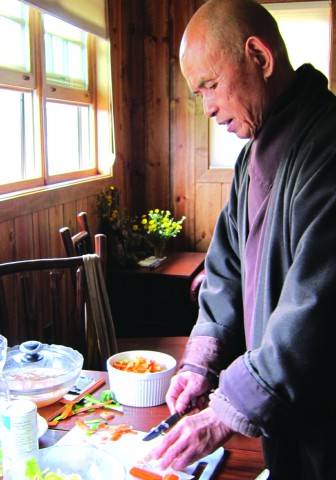
New television programmes have emerged during the pandemic. They are feel-good, happy narratives aimed at reminding us of a world we once knew – of unrestricted travel, delicious food and open skies. The days of backpacking with just a tooth brush, a clean set of clothes and a good book are very much in the past. I used to travel extensively and often and have found the experience of being grounded at home an interesting exercise in patience. Over the past year, I have learnt how to navigate the world virtually, for there are so many ways to tour the world without leaving the comfort of one’s own room.
Culinary tourism has become its own genre of traveling and wanderlust. A recent entry Searching for Italy on CNN profiles the adventures of actor Stanley Tucci. He and his film crew recreate his favourite food memories of his homeland Italy. He takes his viewers to the mountain top of Iscia for a traditional rabbit stew cooked according to a family recipe, to Naples to trace the origins of pizza, or along the Amalfi coast in search for the perfect lemon.
The series is akin to a hero’s quest – man’s search for something larger, more beautiful and perfect. In this case, his search is for those memories and trips he has taken over time, to explore his Italian heritage as well as the changing foods in Italy. One can share his sense of accomplishment when the perfect burrata mozzarella is produced or when the flavour of lemon is so delicate that it can be used to enhance a cappuccino. Travel shows like his and blogs centered around food are more than a visual and sensory treat; they release memories deeply embedded into our subconscious.
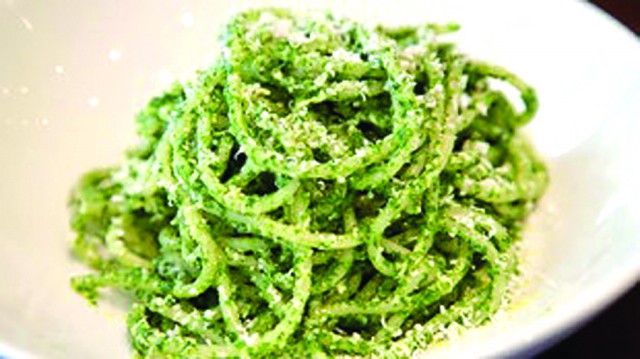
Can you remember your favorite childhood food? Close your eyes for a minute and recall what meals you enjoyed as a child. Unsurprisingly, comfort foods for many of us are linked to childhood. As a friend reminded me, even unhappy homes have memories of good food – especially when not linked to sparring parents. Childhood secret memories of food often revolve around what was forbidden or allowed in small quantities. In many cultures, this is linked to the whole subterranean culture of sweets and comfort food – often a carbohydrate, deep fried and even better if sweet. A donut is a perfect example. I still remember an American expat in Lahore during the 1970s who used to bring over homemade donuts to our home – which we would sneak away and when not caught out douse them with condensed milk.
Food has also been synonymous with health and wealth and forms an intrinsic part of culture – whether in a home, village or a country. It provides a way for people to stay connected to their past, especially through family recipes passed down generation through generation and often across cultures.
Immigrants especially found this a way to preserve links to their homeland – as important as language or dialect or family history. In America, this has spawned its own kind of cuisine clone – the New York style pizza, Korean-American and Tex Mex. In Pakistan, Chinese cuisine has adapted to local palates. Chicken Manchurian is as close to a spicy chicken curry as one can get.
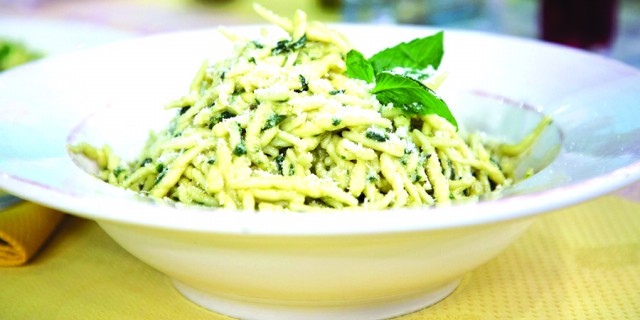
For centuries, food has been an extension of cultural identity. Italians may be blessed with pasta as their national basic staple, but others are equally blessed with wheat or rice. To me, perfection is aloo gosht (meat and potato curry), dal and rice – a simple meal that promises order and peace to the world. Add some mango pickle or fresh green chilies and you can be transported to another world. Simplicity in food can often have its own magic powers to transform our moods.
What makes certain cultures renowned for their food and others not? Italy, for example, is famous world over for its pizza and pasta, accentuated by the purest virgin olive oil, vegetables sun-kissed by the Mediterranean sun and for its wines. No wonder it is a popular magnet for chefs and cooking schools. There is even a university of slow cooking outside Turin. How many of you know that to make gelato, one has to study the art for at least two years and be certified before being trusted to manufacture high quality ice cream?
Recent food programs have also documented gastronomic variety. An evocative one by acclaimed chef Samin Nosrat is her Netflix show Salt Fat Acid Heat which has an accompanying book. The Iranian-American chef wanders through olive oil plants in Italy, explores the varieties of salt in Japan, limes and lemons in Mexican food and the art of the grill in the US. Each discrete episode demonstrates the importance of cultural identity and family culture in producing quality food.
In many ways, Italian culture is familiar for many Pakistanis – the emphasis on fresh produce, the conversations that centre around meals, the concept of dolce vita (the sweet life) and how linked it is to family and societal fabric. Channeling culture, history and art is embedded into the national consciousness. To take pride and be happy about something which is part of one’s national heritage and history.
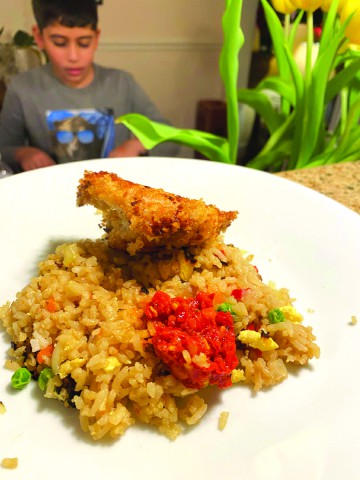
Good food is therefore intrinsically linked to the social fabric of society – to sit and break bread literally is something common in many cultures – whether in Christianity or in Islam, particularly during the month of Ramadan. Similarly, there are often conventions about what constitutes good and bad food, what is seasonal or when to eat certain foods or not. Food therefore implies a material and symbolic significance – the more complicated culinary techniques and practices kept for important occasions and for those with wealth or to show off culinary techniques. In Pakistan, it is no wonder that the wedding banquets boast wealth and social status. Government policies mandating one dish restrictions have levelled that out.
The school which my children attend in DC hosts many embassy families. There, the most exciting event of the year was the international food day, where one is tempted to steer through 80 different food stalls, offering tempting Pakistani parathas, Hungarian goulash British sponge cakes or Icelandic desserts. In one afternoon, one could travel the world.
I find cooking for my children is a way of relaxing but through the pandemic lockdown it has accentuated a sense of family culture. Together we experiment with recipes from around the world, encouraging our children to familiarize themselves with tastes and flavors that take them into different societies. Their innate longings are diverse and esoteric – they have cravings for broths and East Asian curries during the winter and then during the summer, we have made seasonal forays into Lebanese, Turkish, Vietnamese or Mexican kitchens as a way of traveling virtually to those countries.
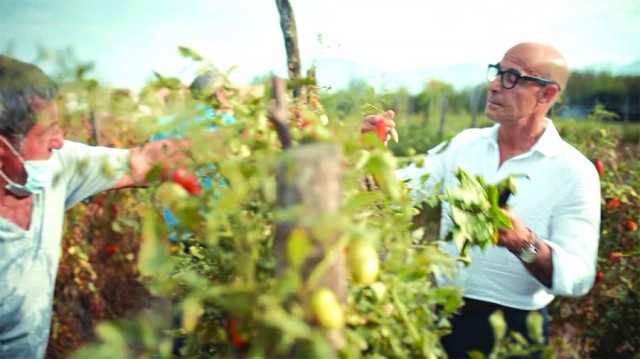
The search for a perfect recipe has provided our family hours of collective fun. Together, we have been taught by Chinese friends how to make dumplings, leading to the inevitable argument at the table as to who made the perfect dumpling or whose dumpling is the best. My children yearn to set up their own dumpling and soup stall – akin to the cartoon Kung Fu Panda with his irresistible bowl of dumplings.
I realized that these family adventures with food had an impact on my son ( who loves to bake and cook as a form of relaxation). One day, expecting him to be on Minecraft, I found him googling Youtube for the instruction guide video for the perfect paratha. He found it in a series of South Indian housewife videos – the Kerala paratha with layers of ghee, flour and water blended in perfect symmetry. Other children I have spoken to are similar, regardless of culture – they long for an egg and paratha after uneasy exams or look forward to weekend lunches where the old family recipes are rolled out and shared across the table. In our family in Lahore, our cook Zia ul Haq became the custodian of our family’s recipes. He inherited them from my grandmother. No one else can cook like he can and none of us dare compete.
Serenity can also be achieved at the table. Thich Naat Hanh, the Vietnamese monk famous for being nominated in 1967 by Martin Luther King for the Nobel Peace Prize, has even authored books on this. After 60 years of experience in teaching meditation, he was convinced that a moment of the day, even at mealtimes, can serve to increase our personal awareness.
He believes every meal can be turned into an occasion for personal growth, when you realise that food is the universal gift. For example, “the sun helps a plant to grow, the rain provides nourishment, care is given by the farmers and there is artistry from the chefs who are able to cook with flair.” It sounds deceptively simple but it requires you to focus on the present – the act of eating or sharing a meal. This is the only way, he believes, to achieve serenity and well-being: “In life we think too much. It is beautiful to give our minds a break from the activity of thinking.”
As spring approaches – a new season in many cultures linked to Lent and Easter or the Persian Nowroze – I would argue that each of us should pause and think of good food and share a special home cooked meal with those we love – the essence of Dolce Vita everywhere in this beautiful cornucopia of earthly, edible delights.
Culinary tourism has become its own genre of traveling and wanderlust. A recent entry Searching for Italy on CNN profiles the adventures of actor Stanley Tucci. He and his film crew recreate his favourite food memories of his homeland Italy. He takes his viewers to the mountain top of Iscia for a traditional rabbit stew cooked according to a family recipe, to Naples to trace the origins of pizza, or along the Amalfi coast in search for the perfect lemon.
The series is akin to a hero’s quest – man’s search for something larger, more beautiful and perfect. In this case, his search is for those memories and trips he has taken over time, to explore his Italian heritage as well as the changing foods in Italy. One can share his sense of accomplishment when the perfect burrata mozzarella is produced or when the flavour of lemon is so delicate that it can be used to enhance a cappuccino. Travel shows like his and blogs centered around food are more than a visual and sensory treat; they release memories deeply embedded into our subconscious.

Can you remember your favorite childhood food? Close your eyes for a minute and recall what meals you enjoyed as a child. Unsurprisingly, comfort foods for many of us are linked to childhood. As a friend reminded me, even unhappy homes have memories of good food – especially when not linked to sparring parents. Childhood secret memories of food often revolve around what was forbidden or allowed in small quantities. In many cultures, this is linked to the whole subterranean culture of sweets and comfort food – often a carbohydrate, deep fried and even better if sweet. A donut is a perfect example. I still remember an American expat in Lahore during the 1970s who used to bring over homemade donuts to our home – which we would sneak away and when not caught out douse them with condensed milk.
Food has also been synonymous with health and wealth and forms an intrinsic part of culture – whether in a home, village or a country. It provides a way for people to stay connected to their past, especially through family recipes passed down generation through generation and often across cultures.
Immigrants especially found this a way to preserve links to their homeland – as important as language or dialect or family history. In America, this has spawned its own kind of cuisine clone – the New York style pizza, Korean-American and Tex Mex. In Pakistan, Chinese cuisine has adapted to local palates. Chicken Manchurian is as close to a spicy chicken curry as one can get.

For centuries, food has been an extension of cultural identity. Italians may be blessed with pasta as their national basic staple, but others are equally blessed with wheat or rice. To me, perfection is aloo gosht (meat and potato curry), dal and rice – a simple meal that promises order and peace to the world. Add some mango pickle or fresh green chilies and you can be transported to another world. Simplicity in food can often have its own magic powers to transform our moods.
What makes certain cultures renowned for their food and others not? Italy, for example, is famous world over for its pizza and pasta, accentuated by the purest virgin olive oil, vegetables sun-kissed by the Mediterranean sun and for its wines. No wonder it is a popular magnet for chefs and cooking schools. There is even a university of slow cooking outside Turin. How many of you know that to make gelato, one has to study the art for at least two years and be certified before being trusted to manufacture high quality ice cream?
Recent food programs have also documented gastronomic variety. An evocative one by acclaimed chef Samin Nosrat is her Netflix show Salt Fat Acid Heat which has an accompanying book. The Iranian-American chef wanders through olive oil plants in Italy, explores the varieties of salt in Japan, limes and lemons in Mexican food and the art of the grill in the US. Each discrete episode demonstrates the importance of cultural identity and family culture in producing quality food.
In many ways, Italian culture is familiar for many Pakistanis – the emphasis on fresh produce, the conversations that centre around meals, the concept of dolce vita (the sweet life) and how linked it is to family and societal fabric
In many ways, Italian culture is familiar for many Pakistanis – the emphasis on fresh produce, the conversations that centre around meals, the concept of dolce vita (the sweet life) and how linked it is to family and societal fabric. Channeling culture, history and art is embedded into the national consciousness. To take pride and be happy about something which is part of one’s national heritage and history.

Good food is therefore intrinsically linked to the social fabric of society – to sit and break bread literally is something common in many cultures – whether in Christianity or in Islam, particularly during the month of Ramadan. Similarly, there are often conventions about what constitutes good and bad food, what is seasonal or when to eat certain foods or not. Food therefore implies a material and symbolic significance – the more complicated culinary techniques and practices kept for important occasions and for those with wealth or to show off culinary techniques. In Pakistan, it is no wonder that the wedding banquets boast wealth and social status. Government policies mandating one dish restrictions have levelled that out.
The school which my children attend in DC hosts many embassy families. There, the most exciting event of the year was the international food day, where one is tempted to steer through 80 different food stalls, offering tempting Pakistani parathas, Hungarian goulash British sponge cakes or Icelandic desserts. In one afternoon, one could travel the world.
I find cooking for my children is a way of relaxing but through the pandemic lockdown it has accentuated a sense of family culture. Together we experiment with recipes from around the world, encouraging our children to familiarize themselves with tastes and flavors that take them into different societies. Their innate longings are diverse and esoteric – they have cravings for broths and East Asian curries during the winter and then during the summer, we have made seasonal forays into Lebanese, Turkish, Vietnamese or Mexican kitchens as a way of traveling virtually to those countries.

The search for a perfect recipe has provided our family hours of collective fun. Together, we have been taught by Chinese friends how to make dumplings, leading to the inevitable argument at the table as to who made the perfect dumpling or whose dumpling is the best. My children yearn to set up their own dumpling and soup stall – akin to the cartoon Kung Fu Panda with his irresistible bowl of dumplings.
I realized that these family adventures with food had an impact on my son ( who loves to bake and cook as a form of relaxation). One day, expecting him to be on Minecraft, I found him googling Youtube for the instruction guide video for the perfect paratha. He found it in a series of South Indian housewife videos – the Kerala paratha with layers of ghee, flour and water blended in perfect symmetry. Other children I have spoken to are similar, regardless of culture – they long for an egg and paratha after uneasy exams or look forward to weekend lunches where the old family recipes are rolled out and shared across the table. In our family in Lahore, our cook Zia ul Haq became the custodian of our family’s recipes. He inherited them from my grandmother. No one else can cook like he can and none of us dare compete.
Serenity can also be achieved at the table. Thich Naat Hanh, the Vietnamese monk famous for being nominated in 1967 by Martin Luther King for the Nobel Peace Prize, has even authored books on this. After 60 years of experience in teaching meditation, he was convinced that a moment of the day, even at mealtimes, can serve to increase our personal awareness.
He believes every meal can be turned into an occasion for personal growth, when you realise that food is the universal gift. For example, “the sun helps a plant to grow, the rain provides nourishment, care is given by the farmers and there is artistry from the chefs who are able to cook with flair.” It sounds deceptively simple but it requires you to focus on the present – the act of eating or sharing a meal. This is the only way, he believes, to achieve serenity and well-being: “In life we think too much. It is beautiful to give our minds a break from the activity of thinking.”
As spring approaches – a new season in many cultures linked to Lent and Easter or the Persian Nowroze – I would argue that each of us should pause and think of good food and share a special home cooked meal with those we love – the essence of Dolce Vita everywhere in this beautiful cornucopia of earthly, edible delights.

